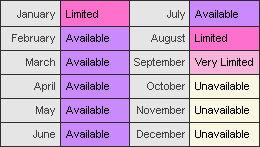All About Passionfruit
History of Passionfruit
The purple passionfruit (Passiflora edulis) is a native of the rainforest margins in the Amazon region of Brazil and perhaps also of Paraguay and northern Argentina. It has adapted to the cooler sub-tropics and the high altitude tropics.
There are many other passiflora species spread widely around the globe and about 50 species are native to New Zealand, Australia, the Pacific and South East Asia.
Passionfruit acquired its name from Spanish missionaries who thought parts of the plant's flower resembled different religious symbols. The Jesuit missionaries who accompanied the Conquistadors to South America saw in its striking flower a means of illustrating the Crucifixion; the 10 petals and sepals represented the apostles, the crown of thorns was seen in the filaments, the five anthers represent the five wounds, the three stigmas were allied with the nails used to pierce the hands and feet of Jesus and the vine's tendrils were equated with the whips.
The first commercial plantings of purple passionfruit in New Zealand were at Kerikeri in 1927 and a few years later there were more at Auckland and Tauranga. Until the mid-1930's, successful cultivation of passionfruit was relatively easy but since then, the incidence of disease has made commercial production more difficult, reducing yields and increasing costs for growers.
 Availability in New Zealand
Availability in New Zealand
Availability of New Zealand grown passionfruit also depends on the timing of pruning and the growing location. In certain areas growers prune for very early or very late crops to produce fruit outside the normal growing season which often fetches very good market prices.
Passionfruit produces a continuous crop, with flowering and fruit set happening at the same time as the first fruit ripens. This extends the harvest season of passionfruit over several months, commencing in late January through to September. Frosts may reduce the crop during the middle of the year and pruning terminates the ripening season in early spring.
Composition
| Water | 84.70 | |
| Energy | (kJ) | 188.00 |
| Protein | 2.80 | |
| Total Fat | 0.50 | |
| Dietary Fibre | 3.30 |